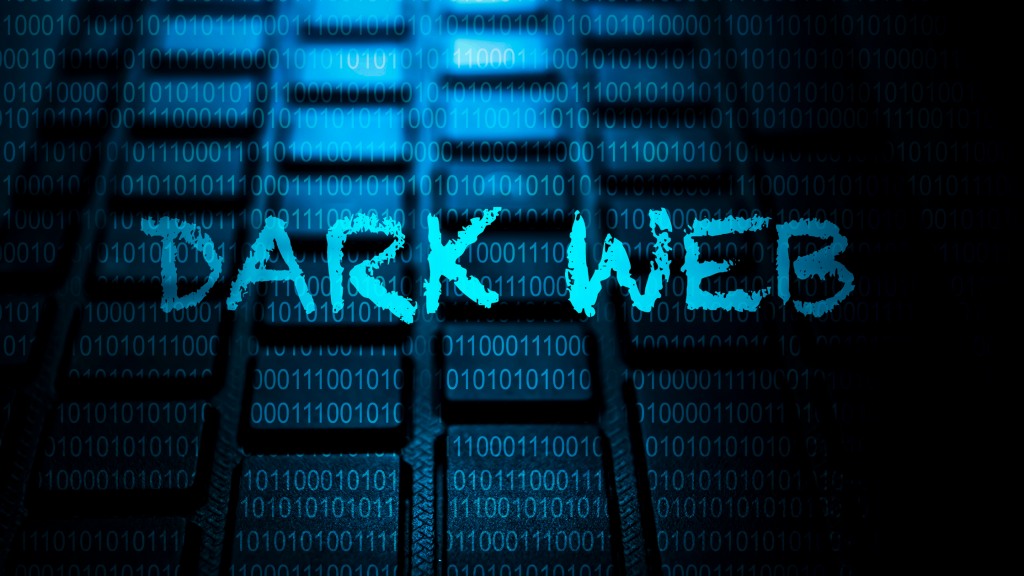
Data, data, data – it’s about the data: Your data. Your clients, their payment processing information, their history of transactions with your company, their key contacts and decision makers: This is the life blood of your business. When you couple that data with your own internal information like your banking and credit data, employee passwords and authentication factors – those items which allow access to your network data – you are looking at an extremely valuable commodity. Not just to you, but to cyber criminals.
Do you know how much of your data is out there on the market? There is a Black Market for stolen data: It’s called the Dark Web.
You can find anything you want on Google, right? Wrong. Google only accesses the Surface Web (also known as the Clear Web), which accounts for only 4% of the total content that exists on the World Wide Web. According to WorldWideWebSize.com, research has shown over 4.5 billion indexed pages. While no page count has been estimated for the Deep Web (which includes the Dark Web), it is estimated that it contains 7,500 terabytes (tb) of information. This translates into over 500 billion individual documents. The Surface Web contains about 1 billion.
Get the picture? It’s a big one. Think of an iceberg where only 10 percent is above the waterline. On the Internet, only about 4% is above the waterline. Much of what is on the Deep Web is benign – it’s the .01% on the Dark Web that causes concern.
What is the Dark Web?
Just from talking with new clients and prospects looking at IT Support LA, very few have even heard much if anything about the Dark Web.
It is a very small section of the Deep Web that operates on ‘darknets’ or ‘overlay networks’ – networks that are layered on top of other networks. To access the Dark Web, you need special software with separate communications protocols and authorizations – and if you start acquiring what you need to access it, there is plenty of time to think about what you’re doing. Nobody just stumbles into it.
The first rule is: If you don’t need to go there, don’t go there. Ask any reputable member of the IT Support Los Angeles Community, and the first thing they will ask is why would you want to go there? In Cyber World, the Dark Web is the bad side of town – the worst part of town. It’s where stolen data, extortion, and even the services of killers-for-hire are available. In effect, it’s the biker bar with a couple of dozen Hell’s Angels hanging around out front. Drive on and find another place to have a drink.
Experts like Managed IT Services providers or any type of IT consulting service, know not to fool around in there – and your typical IT support and services professional do not want their clients surfing through there – any wrong step can release a world of hurt on your network and your IT HelpDesk and field IT service technicians will be scrambling to stem the damage.
So how do you find out how much of your data, like your employees’ passwords and login credentials, are up for sale on the Dark Web? Have trustworthy expert run a Dark Web Scan.
What is a dark web scan?
The scan looks for your sensitive information among the available lists of stolen data (data dumps) pages where such data is listed for sale. It is imperative that that the IT support firm that performs the scan is well known to you and trusted – not a ‘Break/Fix’ hourly rate IT services ‘Guy’ – use a respected Managed IT Services provider.
Why? Because to find your data, you must reveal the data to whoever performs the scan. It may take several scans to complete the process. There are also services that perform ongoing Dark Web Monitoring – in effect it is scanning that never stops.
There are other companies like Experian that offer these scanning services. That may be okay for a consumer, but if you are a business with reliable IT support, have them do it – most use a third-party vendor. If they don’t know how to perform this scan or have a partner/conduit to do it, then you are using inferior IT services.
Frequently Asked Questions
Q: What does it mean if my info is on the dark web?
A: In a nutshell, it’s not a good thing. Information that is readily accessible on the internet does not wind up for sale on the dark web. The information there is potentially damaging to the consumer or business that owns it. A crook getting ahold of data like Social Security Numbers (SSNs) Bank account numbers, and credit card numbers (among others) can do devastating things with that information.
Q: How much does a dark web scan cost?
A: It varies. Many companies, like Experian, will perform the first scan free, then ongoing scanning is a monthly fee ($10/month for Experian), but that is geared towards consumers. Services like LifeLock include Dark Web scanning as part of their protection program.
Q: Is it Legal to Surf the Dark Web?
A: It varies. Many companies, like Experian, will perform the first scan free, then ongoing scanning is a monthly fee ($10/month for Experian), but that is geared towards consumers. Services like LifeLock include Dark Web scanning as part of their protection program.
Q: What is inside the deep web?
A: It primarily includes legitimate, non-criminal data that needs to be protected from casual observers. Among other things: Electronic bank statements, health records, emails, chat messages and private content on various platforms such as social media. It’s filled with information that consumers and businesses do not want the public to gain knowledge of – and rightly so.
Any website where you adopt a username and profile protects that information by using the Deep Web, even though the site itself exists on the Surface Web.
The Dark Web also exists within the confines of the Deep Web.
Is your network secure?
The best defense is the best Cybersecurity to protect your data from theft. IT Support LA offers a FREE, no-risk network and security assessment. No strings, and no obligation to ever use our Managed IT Services.
Just fill out the form on this page or call us at:
818-805-0909


